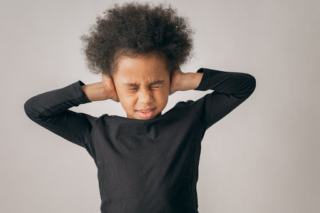

 Ear infections are very common with young children. An adult can get them, too, but the illness is more common in children because their immunity is not well built up to fight common viruses and bacteria. You may not know how to stop them, but you can learn their cause and then take necessary measures to reduce your children’s chances of getting them.
Ear infections are very common with young children. An adult can get them, too, but the illness is more common in children because their immunity is not well built up to fight common viruses and bacteria. You may not know how to stop them, but you can learn their cause and then take necessary measures to reduce your children’s chances of getting them.
What Causes Ear Infection
An ear infection occurs in the middle ear, an air-filled sac behind the eardrum. The space holds tiny vibrating bones which pick up sound waves to make it possible to hear. Cold, flu, and allergies may bring ear infections due to the congestion and swelling in the nasal passages and throat. A buildup of fluids without effective draining may increase the chance of your child getting an ear infection.
If the child has a bacterial infection in the upper respiratory system, the bacteria may spread to his middle ear. If the infection is viral, the same bacteria may spread to the child’s middle ear as a secondary infection. The infection causes a buildup of fluids behind the eardrum.
There are many reasons why a child is more likely to get an ear infection than an adult. Their eustachian tubes are smaller, making it difficult to effectively drain fluid out of their ears even under normal conditions.
Children’s immune systems are not as effective as adults’ since they are still developing. As a result, children are unable to fight infections easily. Sometimes bacteria may get trapped in the child’s adenoids and cause a chronic infection which may get to the Eustachian tubes and middle ear.
When a child has fluid buildup in the mid-ear and has no infection, the condition is known as otitis media with effusion. This condition will not cause symptoms like fever, pus, and drainage, but the pressure might cause pain and different other problems.
Fluid builds up in the middle ear causes the eardrum not to vibrate, which will cause the child to feel like the middle ear is full, and their ability to hear from that ear will decrease. In some cases, the fluid buildup could become severe, and bacteria and viruses will multiply, causing an infection. A verbal child can discuss the symptoms, such as ear pain with their parents, but since an ear infection may occur before a child becomes verbal, it’s essential to be on the lookout for other signs.
An ear infection has the following symptoms.
Ear pain: ear pain is most common in older children and adults. In a young child, you should check if they are crying while rubbing their ears, having trouble sleeping, or being irritable.
Appetite loss: loss of appetite is more noticeable in young children, especially those who bottle feed. Swallowing causes pressure in the middle ear, making the child feel pain and have less desire to feed.
Irritability: recurring pain may cause fussiness and irritability
Fever: ear infections cause fever with 100° F (38 C) up to 104° F.
Loss of hearing: children have bones in the middle year which connect to the nerves sending electrical signals to their brain. Fluid buildup behind the eardrum reduces movement of the electrical signals through their inner ear bones.
Treatment occurs after diagnosing. An ENT doctor does a physical exam to examine the ear using an otoscope. In case they notice any infection, they develop a treatment plan. If the child has an infection, an ear infection specialist will prescribe antibiotics, and, in most cases, Amoxycillin will clear it. Antibiotics are only used if a child gets recurrent ear infections, but not every child needs them.
In most cases, the infection will clear out on its own, and the doctor may prescribe medicine for the pain. Antibiotics do not treat viral ear infections and may be associated with different side effects and resistance.
The doctor first observes how the child is recovering before administering antibiotics, and the parent may be asked to return for follow-up. If there is no improvement after some hours, the American Academy of Pediatrics recommends starting the child on antibiotics.